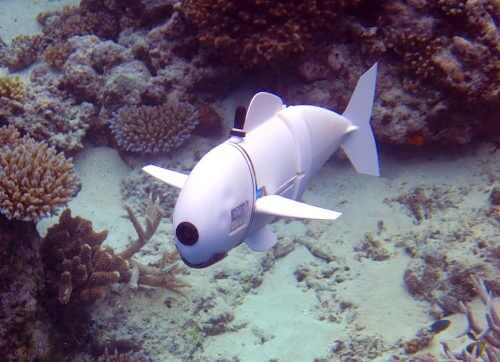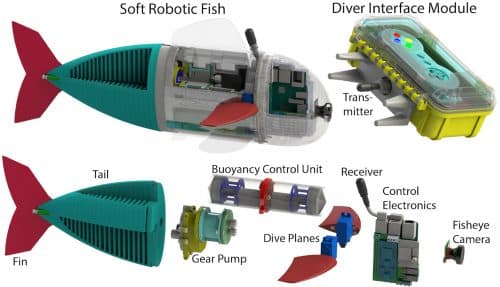Researchers from MIT have created a soft robotic fish, which integrates into the coral reef environment in a natural way and enables ecological research without disturbing the environment

By: Or Amr
Fish, like most animals, know very well which animals they get along with and which ones they should keep their distance from. Few animals get along with humans, and fish are no different in this respect. Whether it's fear or curiosity, fish behave differently when humans approach them. Hence, studying fish in the presence of people is a challenging situation that requires a solution.
Researchers from the Computer Science and Artificial Intelligence Laboratory at MIT University published an article in the journal Science Robotics about the development of a new type of robotic fish, called Soft Robotic Fish - SoFi, which integrates seamlessly into a coral reef and enables close-range observations. Sophie is designed in the size of a real fish and has swimming patterns and behavior similar to those of a real fish. At the same time, it is a real research tool with a user-friendly control system.
Sophie is navigated by a diver using a waterproof game console, with which he communicates with the robot ultrasonically. The robot is able to translate direction commands into XNUMXD trajectories that it can follow. The battery life is forty minutes, a time suitable for research (most divers don't spend more than an hour in the water anyway).
The robot moves in a similar way to a real fish. The initial thrust comes from the tail, which is activated at a frequency of between 0.9 and 1.4 Hz by pumping oil to one side of the tail and then to the other. This action causes the tail to flex back and forth and gives the robot a maximum speed of 21.7 centimeters per second. By changing the amounts of oil pumped and transferred to each side, the tail can be bent to either side, and thanks to this, Sophie can turn. In the attached video you can see the performance of the robot.

Sophie's performance was evaluated in the Fiji Islands - an area rich in coral reefs and interactions between fish. The experience included six dives, which lasted a total of two hundred and forty minutes under water. A diver ten meters away from Sophie tried to steer him as far as possible to areas of interest with environmental features and marine life. The researchers observed that Sophie does not deter fish near it, but more experiments will be required to reach an unequivocal conclusion about the effect of a robotic fish on a marine environment.
This development is an interesting example of biomimetic innovation that learns from nature in order to 'give back' to nature. The robotic fish, which is an imitation of the structure, shape, and swimming patterns of a real fish, was developed with the aim of deepening the study of the fish population in the reef and understanding their behavior. In the future, the research may contribute to the preservation of species diversity and the natural habitat.

One response
Let's just hope some shark doesn't swallow him